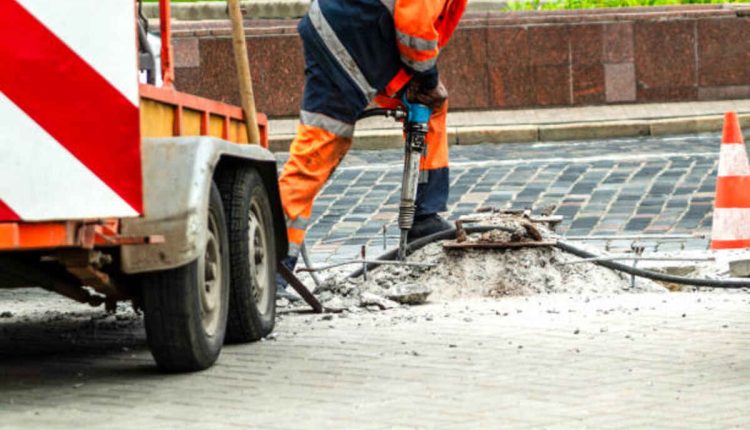What Is Swimming Pool Demolition?
Once your swimming pool is no longer needed, it’s time to dismantle and dispose of it properly. This may require heavy machinery as well as expert knowledge for removal. Best way to find the Elk Grove Demolition Contractor.
Various methods are available for draining and filling a swimming pool, some of which are more cost-effective while still offering other advantages.
Initial Assessment
Swimming pool demolition can be a complex and time-consuming endeavor that requires heavy machinery and safety gear. Contractors typically use hydraulic breakers and pneumatic hammers to break up concrete structures; as these powerful tools may create dangerous projectiles that could endanger people nearby, proper safety procedures must always be observed. Furthermore, swimming pools must typically be demolished during dry weather since all their water must first be drained off before demolition can commence.
As part of draining the swimming pool, all materials such as concrete/gunite, fiberglass, liner, and rebar must be removed from its cavity for disposal. Once empty, this space must then be backfilled and compacted—this step includes drilling holes to prevent flooding and sinking in the future. Depending on where you reside, some cities require that an engineer monitor this backfilled area so new construction projects are safe from collapse.
If you want to update your backyard, an empty swimming pool could become the focal point for outdoor entertaining or relaxing, with space converted into a patio for use during special events like barbecues. Install a pond or other water feature as an added feature – but be mindful that empty pools may pose potential dangers to children and animals, so consult a professional before emptying immediately.
Partly Removing and Filling
If the quality of your pool has decreased over time, removing it might be in the best interests. However, it requires considerable work and expertise, which makes hiring the appropriate Bay Area company for pool demolition essential in ensuring its successful completion.
Drain and empty your pool before removing all equipment and parts. Disconnect any gas or electrical lines, and identify and mark service cables and wires buried underground to avoid damaging any infrastructure or causing injuries during excavation work.
Backfilling involves filling the empty area where your swimming pool once stood with dirt or gravel before compacting it to form a stable yard. This step may be necessary after complete pool demolition if a structure will be built on top of it in the future, while gardening or landscaping projects often do not necessitate backfilling as much.
Partial pool fill-in involves draining the pool and clearing away materials like concrete/gunite, fiberglass linings, and rebar from its cavities for removal and hauling away. Once cleared away, this space can then be filled and compacted – although most cities consider former pool sites non-buildable (meaning no additions or dwellings can be constructed there), though suitable options include sheds, concrete structures, landscaping features such as plants or trees could still exist on them.
Full Removal
Complete removal involves dismantling and hauling away an entire swimming pool using various pieces of equipment, making this method perfect for creating something else in its former space, such as a shed, landscaping features, or trees. Furthermore, complete removal reduces any risk associated with seepage or sinkage, as no concrete will remain buried beneath the soil surface.
After draining the pool, all materials such as concrete/gunite, fiberglass, liner, and rebar will need to be removed and hauled off-site before being filled with dirt or gravel and compacted for removal. An experienced company should be hired, as they are adept at using heavy machinery.
Full removals have several advantages over partial fill-ins: firstly, they render the area non-buildable, so it shouldn’t impact your property value; however, you will have to disclose that once it exists. Complete removal may cost more than partial fill-ins but is generally safer and quicker; it typically only takes days for it to be backfilled and ready for use again.
Cost
The cost of swimming pool demolition depends on whether you opt for full or partial removal. Complete removal can take longer and be more costly, but it can also create more suitable ground for future development and increase property values; however, such a process requires acquiring a permit that could take three weeks or more to obtain.
At each step in the swimming pool demolition process, contractors must drain and dispose of water before disconnecting gas and electricity services to avoid damaging buried pipes, sprinklers, or service lines with heavy equipment. You should hire only professionals with experience operating large pieces of machinery who know precisely what to look out for when working with large pieces of machinery.
Complete demolition can cost as much as $19,000, while partial removal, known as pool fill-in, can be less costly but may render the land unsuitable for building additions or dwellings due to sinking and drainage issues. Also, any partial removal must be disclosed to potential future buyers as this may impact its resale value.
Removing a pool may also incur other costs, such as a contractor markup for managing and overseeing the project, junk removal services, dumpster fees, and permits. A structural engineer should also be hired to ensure the area filled in by filling can withstand soil compaction, storm surge, and rainfall storms. Their services typically cost $100-200 an hour.


